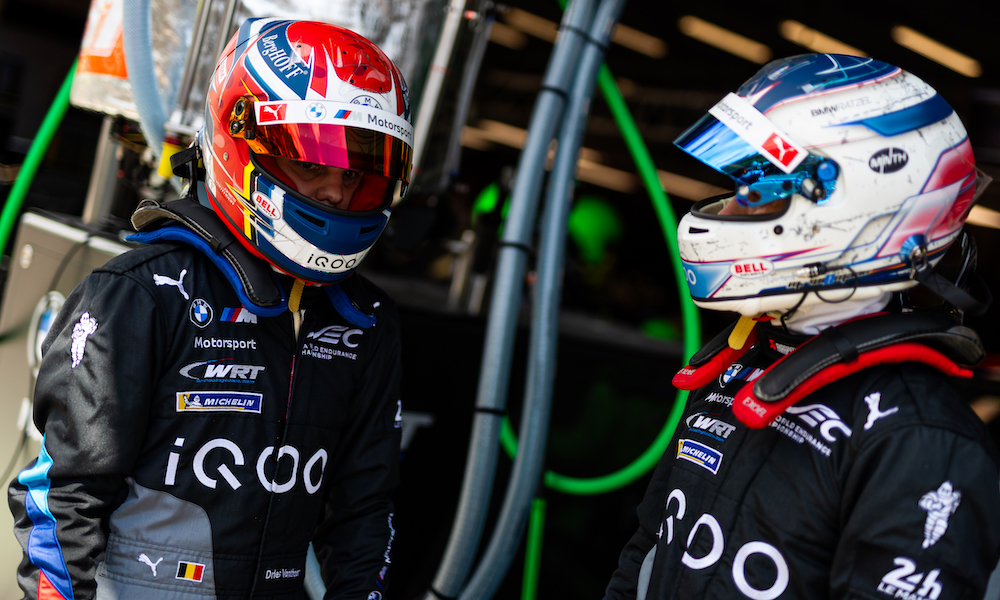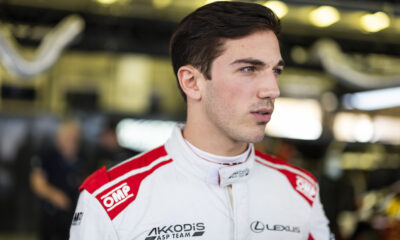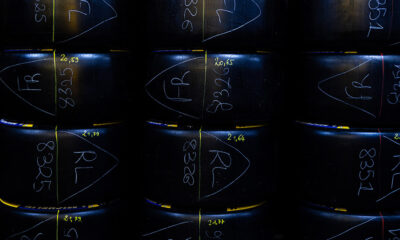
Photo: Javier Jimenez/DPPI
Management figures from Hypercar manufacturers Porsche, BMW and Peugeot have spoken out against a proposal that would mandate three-driver lineups for all FIA World Endurance Championship races beginning next year.
ACO President Pierre Fillon previously stated that the WEC is “thinking about” implementing a rule that would ban lineups consisting of two drivers for shorter WEC rounds.
Two-driver crews have seen increased use this season, with the likes of Chip Ganassi Racing, Proton Competition, Hertz Team JOTA and Peugeot making use of it at various stages of the year.
Porsche factory LMDh director Urs Kuratle was one of a number of notable paddock figures that voiced the opinion that the decision on the number of drivers per car should remain in the hands of teams, as opposed to something that is dictated by the regulations.
“I think, and this is me personally, but also as Porsche, we think it should be in the garden of the OEMs or the teams whether it’s two or three drivers,” Kuratle told Sportscar365.
“It should not be anything that should be mandated by the rules.
“Just as it is now, you can do whatever you want. It’s not a safety critical issue if you do it with two. We’re talking for the six-hour races, we’re not talking the ten or 24-hour races, but for any duration, it should be up to the team.
“I think the driving limits is the only thing that makes sense in the rulebook. There shouldn’t be anything more than this in the rules about drivers.”
Sportscar365 understands that the proposal is set to be discussed in a working group meeting later this week.
Kuratle’s comments were echoed by BMW M Motorsport director Andreas Roos, who said “it should definitely be left open to teams” and noted that a three-driver mandate will make it harder for manufacturers and teams to navigate clashes.
As it stands, the WEC calendar is set to conflict with the IMSA WeatherTech SportsCar Championship schedule on two occasions, including one round with the GTP class, while the Berlin Formula E round falls on the same weekend as the 6 Hours of Sao Paulo in July.
“Especially under the circumstances we will have also next year again, when the calendars are clashing between IMSA and WEC and also between WEC and Formula E,” said Roos.
“We know that some teams are sharing drivers between the most important endurance racing championships and also between Formula E and the WEC program.
“So as long as there are clashes, it anyway would be hard for the teams and manufacturers to have additional drivers just because there are clashes.
“So at the end, fully agree, it should be left open to the teams if they want to go with two or three drivers.”
Peugeot was one of the manufacturers to drop down to two drivers per car at this year’s 6 Hours of Spa-Francorchamps when Jean-Eric Vergne and Stoffel Vandoorne were unable to race due to a Formula E clash.
Technical director Olivier Jansonnie described that solution as “quite clever” and a “good compromise,” adding that it is something that he would like to remain an option in the future.
“Our solution is to try to keep the regulations as they are,” he said,
“That is what we are pushing for and we are not the only team pushing for it. There are other teams that have this issue of Formula E drivers driving for them.
“For us the solution we had in Spa was quite clever, it was a good compromise, and we would like to keep the regulations the same.
“When you have three drivers in a normal event, if something happens to one of your drivers, then you always run with two drivers, except maybe [at COTA].
Jansonnie added that he ‘doesn’t see the sense in changing the rule,’ predicting that a majority of a manufacturers would need to agree for the change to be made.
Toyota Gazoo Racing Europe technical director David Floury admitted that he ‘doesn’t have a strong view’ on the proposal when asked.
“There are pros and cons,” he said. “When it’s a six-hour race and it’s not very hot, it’s probably better to race with only two drivers.
“But in Qatar, Bahrain, [COTA] and Le Mans you need three drivers, so changing every other race [is not good]. And to prepare for Le Mans it’s good to have the stability.”
John Dagys & Jamie Klein contributed to this story

























